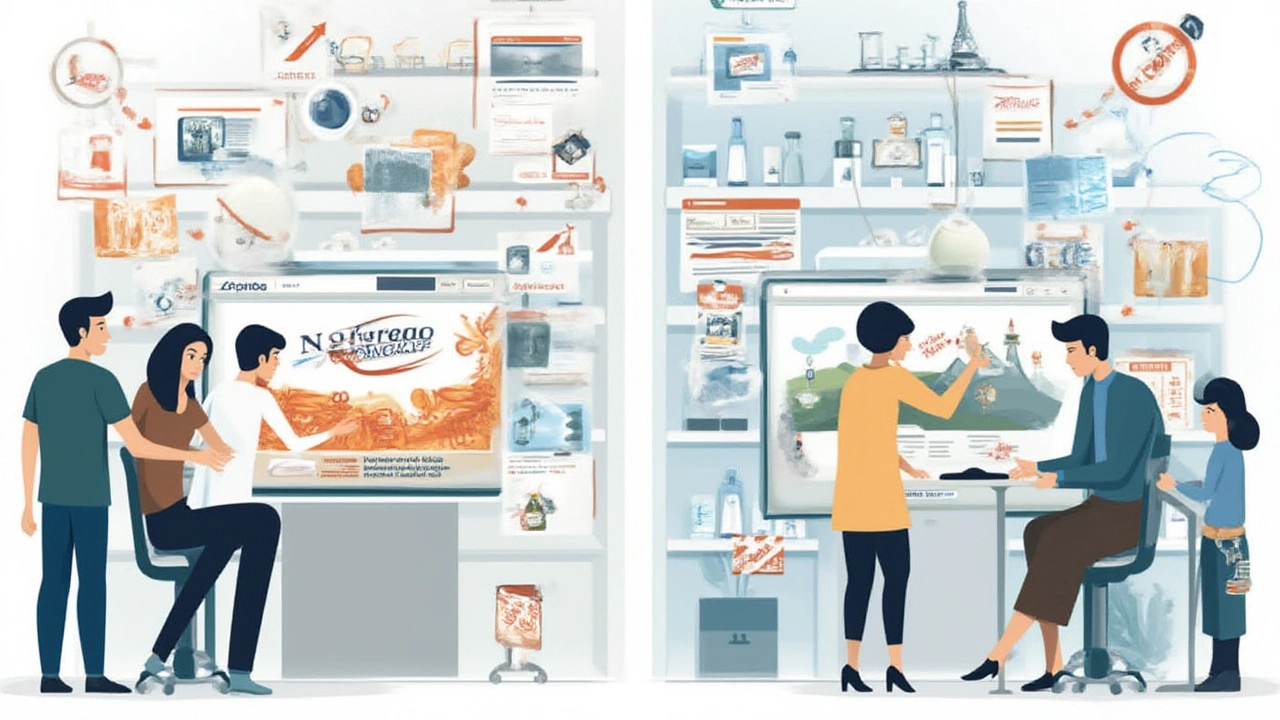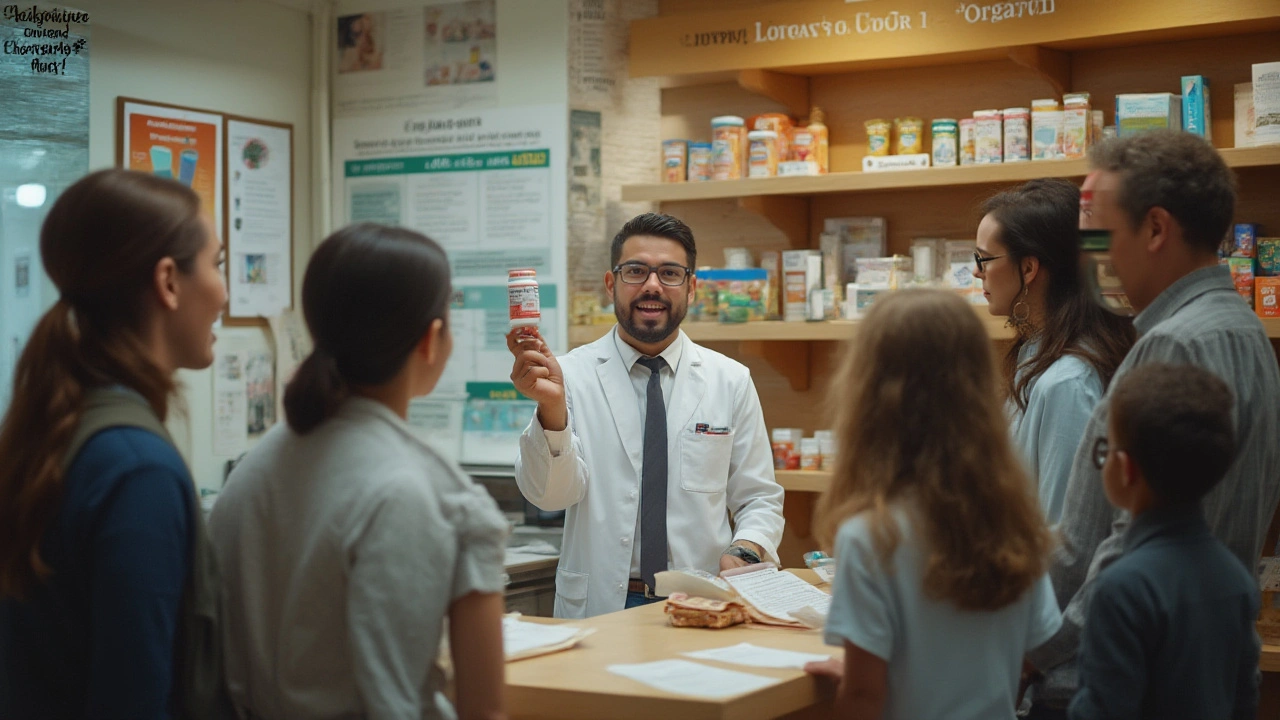 Jul, 25 2025
Jul, 25 2025
If you’re thinking about buying Zantac online, you’ve probably noticed things aren’t as straightforward as simply adding it to a shopping cart. The shelves at many local drugstores look a lot different too. Zantac—once a go-to for heartburn—has bounced in and out of the spotlight. In 2019, several versions were pulled due to concerns about small amounts of a contaminant called NDMA. Since then, there’s been a wave of confusion about what’s safe, what’s legal, and where Zantac even fits into your options for acid relief. Still, buying Zantac online is possible and, if you do it right, safe. But you’ve got to know where to look, how to spot real pharmacies, and what’s changed since Zantac’s return.
The Zantac Comeback: What Changed and What to Watch For
Let’s get some facts straight because the Zantac you remember (ranitidine) is no longer the Zantac you see today. Ranitidine-based Zantac was recalled after tests showed that NDMA—a potential cancer-causing chemical—could form under certain conditions, like heat storage. By 2021, almost all ranitidine products vanished from pharmacy shelves, online and off. Fast-forward, and Zantac returned in 2022, but with a new active ingredient called famotidine. This version, sometimes called "Zantac 360°," works similarly but doesn’t break down into NDMA, making it safer based on current research.
Studies found that famotidine is not just free of the NDMA risk; it’s also as effective in stopping heartburn and acid reflux for most people. The new recipe is already a hit, making up about 14% of heartburn remedy sales in the US, according to IQVIA in late 2024. Still, a lot of websites might still offer “old” Zantac through questionable channels. If you’re scouring the internet for the original ranitidine version, pause: most reputable sellers don’t stock it anymore, especially in the US or EU. Stick to the new, safer formula, and read every product label for the active ingredient before you buy.
Finding Legitimate Online Pharmacies: What to Look For
Wading through a sea of online pharmacies is tricky business. An FDA 2022 analysis estimated more than 95% of websites selling prescription drugs operate illegally or provide fake meds. Even friendly websites with slick designs can hide risky sellers.
- Start with national pharmacy chains or well-known brands. If you already trust their physical stores, their online presence is usually legit.
- Check for certification from pharmacy verification organizations. In the US, look for the National Association of Boards of Pharmacy’s (NABP) Digital Pharmacy Accreditation or .pharmacy domain.
- A licensed online pharmacy will require your prescription for prescription-only meds, even for heartburn drugs at higher doses.
- If the site ships from offshore (outside your country’s regulations), think twice. You’re better off sticking to pharmacies registered in your own country.
- Be wary of super-low prices or outrageous health claims. If it sounds too good to be true, it often is.
Topaz, my cat, is a stickler for routine—he only trusts his favorite kibble. Approach your medicine in the same way: no switching up for a mystery "brand" or a gray-market supplier, just because it pops up first in a search engine. If you ever feel uneasy about a website, cross-check it using pharmacy checker sites or call a pharmacist.

Legal and Safety Considerations Before You Buy
Think buying medicine online is always above-board? It’s more complicated than ordering the latest gadget. Rules can change depending on your country or even your state. In most of the US, the Zantac 360° (famotidine) formula is available over-the-counter, which means you don’t need a prescription for lower doses. For higher-dose products, you’ll need a valid prescription, even online.
Here’s another twist: importing medicine from foreign websites isn’t just risky from a health perspective; it might land you in hot water with customs or drug regulators. The FDA technically bans most overseas medicines mailed to US addresses. Even countries with laxer online rules still require pharmacies to be licensed. If you have allergies or take other medications, check with your doctor before swapping to a new formula, even if it’s labeled "Zantac." If you’re pregnant, nursing, or giving meds to kids, double-check the safety data.
| Country | Zantac (Famotidine) Status | Prescription Needed? |
|---|---|---|
| USA | Available (Zantac 360°) | No (lower dose) |
| UK | Available (as own brand or generic) | No (lower dose), Yes (higher dose) |
| Canada | Available (famotidine generics) | No (lower dose) |
| Australia | Available (famotidine) | No (lower dose) |
Some online sellers will try to skirt these regulations with "consultations" by unknown foreign doctors, but if the box arrives without instructions in your language or looks tampered, cut your losses and don’t use it. Safety first, always.
Step-By-Step Guide: How to Buy Zantac Online
If you’re ready to buy, don’t just Google "buy Zantac online." Take a strategic approach:
- Decide what you need. Do you want Zantac’s “new” famotidine formula, or are you after a generic famotidine? Most pharmacies now only offer the new, NDMA-free version.
- Choose a legitimate pharmacy. Preference should go to sites connected to brick-and-mortar stores, like Walgreens or CVS in the US, Boots in the UK, or their certified online counterparts.
- Read customer reviews, but with skepticism. Look for detailed feedback, not just glowing "It worked!" blurbs. Poor reviews about customer service or weird packaging are red flags.
- Double check the product details. It should list “famotidine” as the main ingredient and specify dosage (10mg, 20mg, or so).
- Add to your cart and follow checkout instructions. Reputable pharmacies will offer secure payment options and clear shipping timelines.
- After purchase, store your meds safely. Heat and humidity are not friends of any medication, and weird smells or broken seals mean you should toss it.
If you ever need help, your local pharmacist can check the packaging or manufacturer code, even for online orders. Don’t ignore your instincts. If something about your package feels “off,” talk to a pharmacy pro before you try the product.

Tips to Stay Safe and Save Money on Your Medication
Shopping online isn’t just about convenience—it’s also about being smart with your wallet and your health. Here are some tips I use myself:
- Sign up for pharmacy newsletters or savings programs; some online drugstores offer coupons that stack with your health insurance or health savings account (HSA) plans.
- Compare prices across multiple legit pharmacy websites before buying—there’s often a big range for identical products due to different ownership and overhead costs.
- Check for loyalty rewards: I paid for Topaz’s prescription kibble once through my own pharmacy’s app and scored future discounts on my meds.
- Always buy or reorder in advance—unexpected shipping delays can leave you without relief if you wait until the last minute.
- Use pill organizers or phone reminders so you don’t miss a dose. Some apps even track your orders and alert you when it’s time to refill.
- Discard expired Zantac (or any meds) safely—many pharmacies will take back unused products for proper disposal.
- If you have a chronic condition or get frequent heartburn, talk to your doctor. Sometimes there are safer or more effective alternatives, or even prescription-level discounts you don’t know about.
Finally, look for transparency on every order: real customer service, a phone number you can actually call, and clear return or refund policies. Genuine pharmacies will never rush you or pressure you into "upgrading" to a bigger pack for huge savings. Stick to what fits your health plan, your budget, and your comfort zone. Happy (and safe) purchasing.

Rekha Tiwari
July 31, 2025 AT 17:10Andy Smith
August 1, 2025 AT 19:45Leah Beazy
August 2, 2025 AT 18:29John Villamayor
August 4, 2025 AT 02:08Jenna Hobbs
August 4, 2025 AT 04:02Ophelia Q
August 5, 2025 AT 06:02Elliott Jackson
August 6, 2025 AT 15:20McKayla Carda
August 7, 2025 AT 00:18Christopher Ramsbottom-Isherwood
August 8, 2025 AT 07:15Stacy Reed
August 10, 2025 AT 02:08Robert Gallagher
August 11, 2025 AT 18:14Howard Lee
August 13, 2025 AT 10:43Nicole Carpentier
August 14, 2025 AT 22:22Hadrian D'Souza
August 16, 2025 AT 12:59